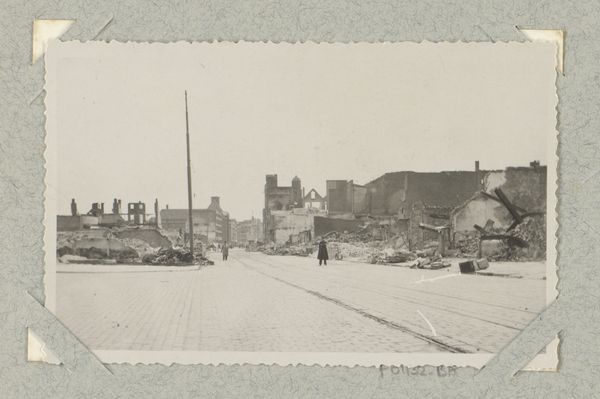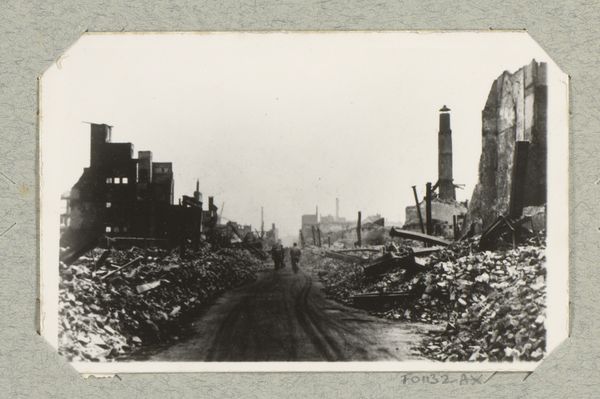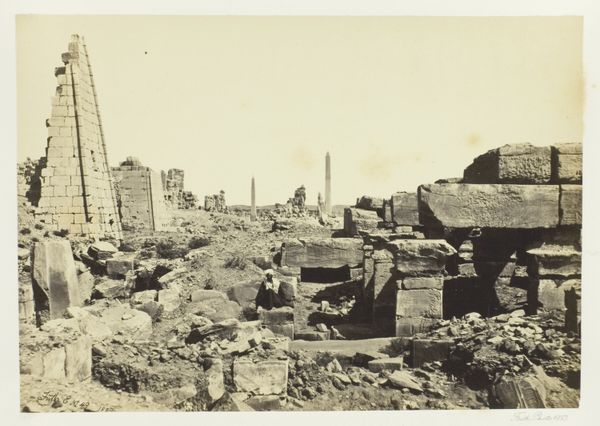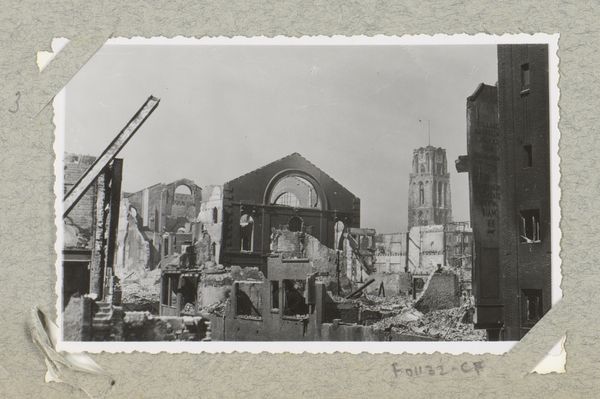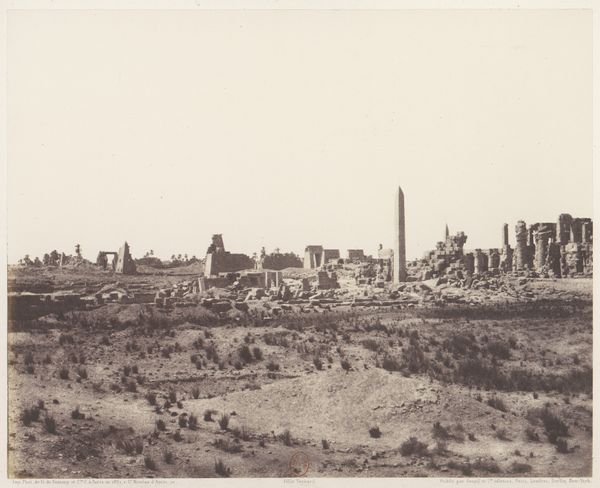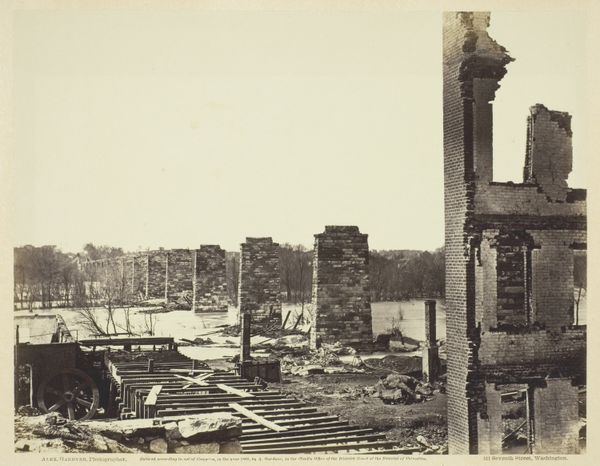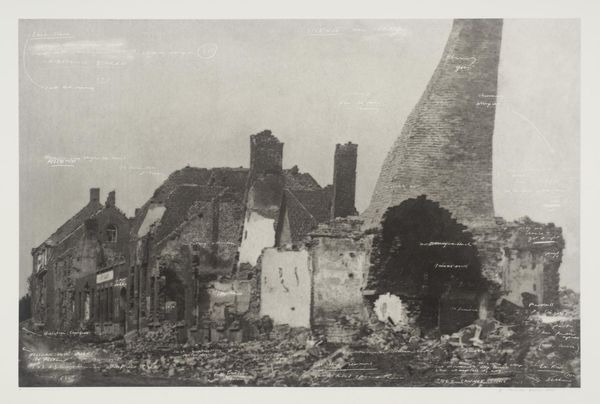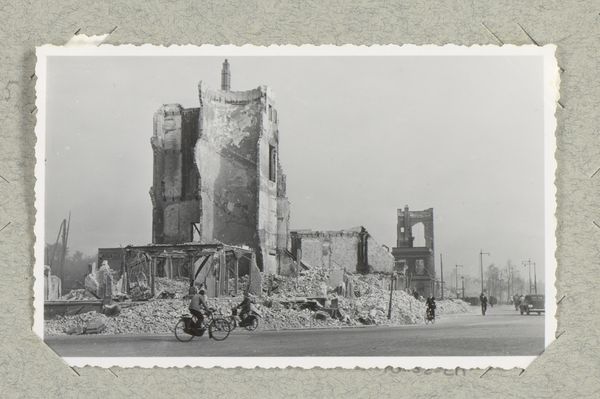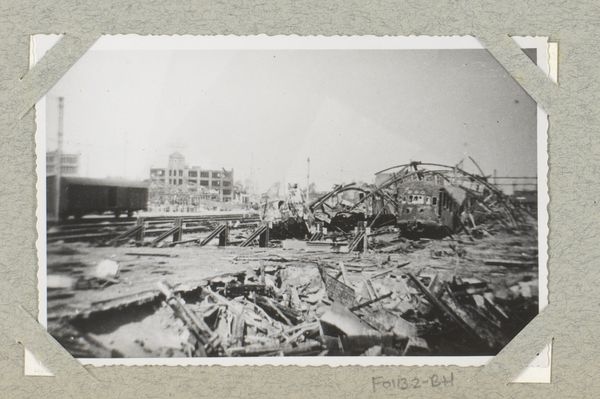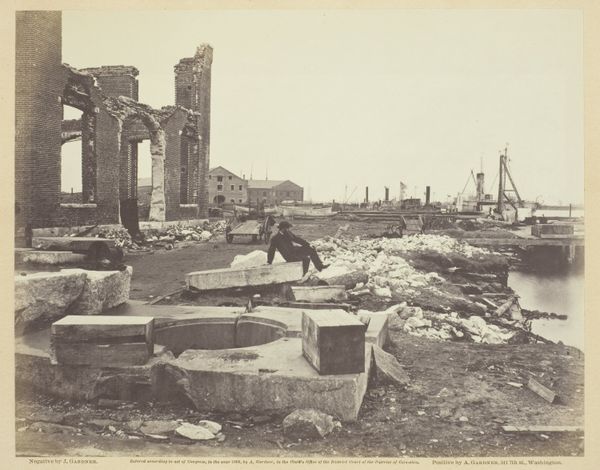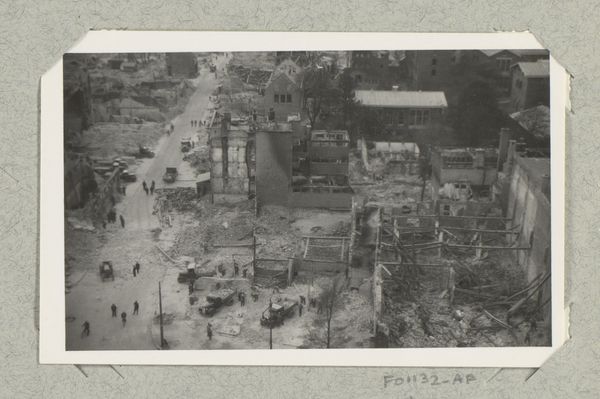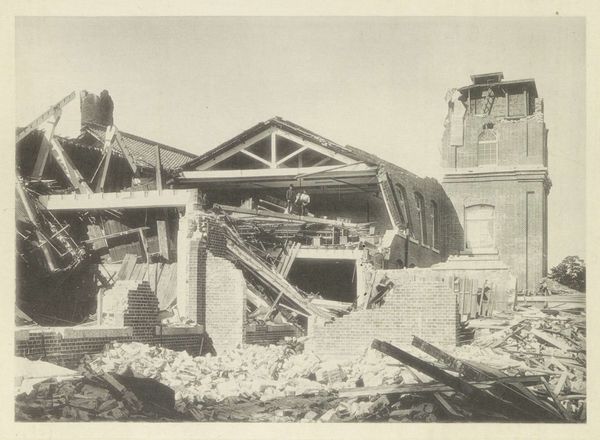
Dimensions: height 6 cm, width 9 cm
Copyright: Rijks Museum: Open Domain
Curator: This photograph, "Ruïnes in Rotterdam," taken sometime between 1940 and 1946, captures a scene of devastation. Its origins are, unfortunately, unknown, and its display here at the Rijksmuseum speaks to the city's historical resilience and identity. Editor: The immediate feeling is starkness, isn’t it? A bleak landscape reduced to rubble, with only fragments remaining. And the monochrome amplifies the feeling of loss. Even the edges of the print seem ragged, mirroring the scene within. Curator: Indeed. The photograph is a jarring piece of visual documentation reflecting a crucial moment in history. Consider how images like these, particularly in the mid-20th century, played a role in shaping public consciousness, reinforcing narratives of victimhood and resilience during the rise of national identities in the postwar era. Editor: But the fragments left behind carry symbolic weight as well. A lonely chimney stack looming above the rubble, reaching like a desperate hand. A ghostly windmill. Aren’t those windmills practically synonymous with Dutch identity? Its very survival here suggests endurance and perhaps the slow grind of recovery. Curator: That’s a thoughtful reading. Windmills are a key aspect of the Dutch iconography. Perhaps that helps make this anonymous image so powerful. By not assigning one specific voice, it can take on greater cultural impact. What’s really important is that images like these circulated in newspapers and photo albums, thereby creating collective memory, especially after periods of immense societal disruption. Editor: It prompts consideration on how Rotterdam then rebuilt itself as this modern, architectural vanguard. It chose to face forward, boldly redefining itself. This photograph offers a crucial visual point of comparison. A stark origin point against all that innovation. Curator: Yes. By showing it here at the Rijksmuseum, we hope visitors engage with the many histories of the city, particularly the consequences of war and reconstruction of Dutch society more broadly. Editor: I think what will stay with me is how a single, relatively simple photograph, through its composition and bleak symbolism, can hold such monumental cultural implications. It echoes the impact of what has been lost.
Comments
No comments
Be the first to comment and join the conversation on the ultimate creative platform.
